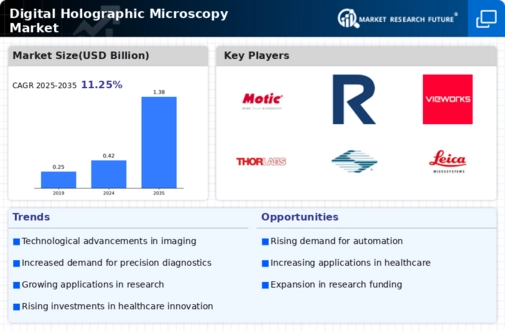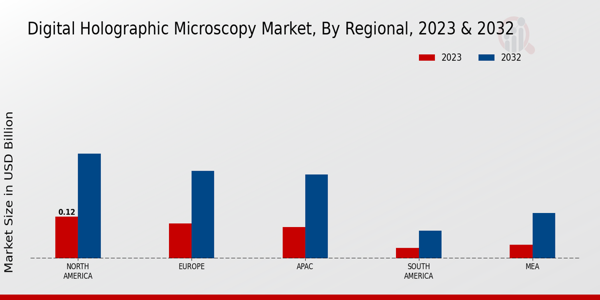The Digital Holographic Microscopy Market is witnessing considerable growth, driven by advancements in imaging technology and increasing applications across various sectors, including biology, materials science, and medical diagnostics. The competitive landscape is characterized by a mix of established companies and innovative startups, all vying for market share and technological leadership. As the demand for non-invasive imaging methods continues to rise, players in this market are focused on enhancing their product offerings, forming strategic alliances, and investing in research and development to better cater to the diverse needs of their customers.
The dynamic market conditions are creating opportunities for innovation, making it imperative for companies to stay ahead of technological trends and consumer preferences to maintain a robust competitive edge.Motic has emerged as a notable player in the Digital Holographic Microscopy Market, showcasing significant strengths that set it apart from its competitors. One of its key advantages lies in its strong commitment to product innovation and quality, which has helped it gain a solid reputation among researchers and educators.
Motic’s focus on user-friendly design and versatile applications ensures that its holographic microscopes are popular across various market segments, allowing customers to seamlessly integrate these devices into their workflows. Furthermore, Motic's comprehensive support and service network helps clients maximize their investment, fostering customer loyalty. The company’s ability to adapt to evolving technological demands while maintaining competitive pricing further solidifies its presence in the market, enabling it to capture a diverse customer base and remain competitive amidst industry challenges.Roper Technologies holds a prominent position in the Digital Holographic Microscopy Market, recognized for its strong technical expertise and diverse product portfolio.
The company's strengths lie in its commitment to high-performance imaging solutions, which address the intricate needs of researchers and clinicians alike. Roper Technologies invests heavily in research and development, ensuring continuous enhancement of its holographic microscopy offerings. This not only solidifies its reputation for reliability and performance but also opens avenues for pioneering advancements in the field. Additionally, Roper Technologies benefits from a broad distribution network, facilitating reach and market penetration. The organization's strategic partnerships and collaborations further propel their standing, enabling rapid technological advancements and increased customer engagement.
Roper Technologies exemplifies how an established player can leverage innovation and market strategy to maintain a competitive edge within the evolving landscape of digital holographic microscopy.






















